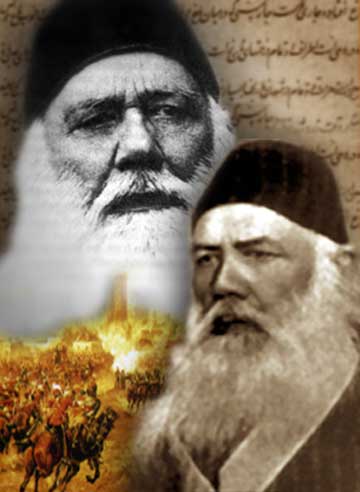
|
Published as 'The Spirit of All Human Beings' in DAWN Images, Sunday, March 21, 2010 By Khurram Ali Shafique Calcutta was the capital of British India in 1863 when a 46-year-old Syed Ahmad Khan (not knighted then) addressed the Muslim nobility of Bengal at the residence of Nawab Abdul Latif Khan on October 16. Syed spoke in Persian, the language of formal addresses among the elite of his community at the time. The address, fortunately preserved to this date, was perhaps the earliest articulation of Muslim nationhood against the new backdrop emerging after 1857. Syed based his concept of nationhood on love. Out of the “uncountable degrees of love” he listed four: respectively, the love of all creation, Nature, humanity and one’s own community. Loving one’s own community was the lowest level, according to him, but he argued that this was where one had to begin (and by community he was explicitly referring to the Indian Muslim community since a homogenous ‘community’ of Hindus and Muslims had not been dreamt of yet). Adding an even lower degree on a personal scale, one could get five levels of love:
This five-fold model proposed to resolve some long-standing conflicts between diverse schools of Muslim thought and the best thing was that it was a reconstruction of ideas already ingrained in the collective consciousness. It didn’t need to be taught to the masses as a new ideology since it had already been part and parcel of their lives for centuries. The core value was the willingness to learn from one another regardless of differences in educational backgrounds. As long as people were open to learning from one another, a simple message floated about personal relationship could easily operate as an allegory about relationship with the community, humanity, nature and the universe. Hence the five-fold model encouraged to “think globally, act locally” since one could start with the love of one’s own community and gradually take the entire community together towards the higher levels of loving humanity, Nature and so on. A classic example was ‘Time Bygone’ (Guzra Hua Zamana), a short narrative written by Syed himself in 1873. In that story, a beautiful bride descends from the starry sky and says to an old man, “I am the spirit of all human beings. I am the goodness that lasts forever. Whoever desires me should strive for the collective good of the entire humanity and especially for the good of their own community.” The old man wakes up to realise that he was an adolescent who had grown old in the dream, and resolves to seek the maiden of his dream. This story could be interpreted on all levels of the five-fold model of love. In the simplest terms, it could serve as a love story about a quest for a soul mate. At other levels the heroine could be located in the writings of the great Sufi poets. Nezami Ganjavi had presented her as Layla, Sheikh Fariduddin Attar as Simorgh and Rumi had clearly called her “the human soul.” Saadi of Shiraz had summed up the concept in the famous quote that now graces the entrance to the Hall of Nations in the UN building in New York: “The children of Adam are limbs to each other, having been created of one essence.” How far the community of Sir Syed was able to live up to these ideals is a question that can be answered in different manners but in any case it would help to remember where the nation was coming from. For that, the Calcutta Address of Syed Ahmad Khan cannot be overlooked and the heroine of his short story ‘ Time Bygone’ must show the path.
|
The core value was the willingness to learn from one another regardless of differences in educational backgrounds.
|


 Nawab Abdul Latif (1828-1893), prominent Muslim reformer from Bengal (right) founded Mohammedan Literary Society in Calcutta in 1863 where Syed Ahmad Khan explained the Muslim concept of nationhood in an address delivered on October 16, 1863.
Nawab Abdul Latif (1828-1893), prominent Muslim reformer from Bengal (right) founded Mohammedan Literary Society in Calcutta in 1863 where Syed Ahmad Khan explained the Muslim concept of nationhood in an address delivered on October 16, 1863.